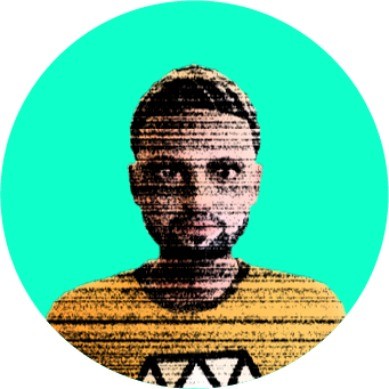May 8, 2023
Table of Contents
Introduction
Art has been an integral part of human civilization for thousands of years, serving as a medium for creative expression, cultural exchange, and historical documentation. However, the digital age has ushered in a new era of art, one that is defined by the emergence of Non-Fungible Tokens (NFTs) and the Metaverse.
The art market was the first to open its doors to NFTs. NFTs that have had considerable success in recent years. In fact, according to data from DappRadar, NFTs had a trading volume of $4.7 billion in the first quarter of 2023.
Digital art
Digital art is a contemporary form of art that has emerged in the age of digital technology.
Unlike traditional forms of art, digital art can be easily shared and distributed online, allowing artists to reach a broader audience.
One potential challenge of digital art is the issue of authenticity and ownership. Unlike traditional art, digital artworks can be easily replicated and distributed, leading to concerns around intellectual property and copyright infringement. However, blockchain technology has emerged as a possible solution to this issue, providing a secure and immutable record of ownership and provenance.
Art, trust and blockchain
Establishing trust within the art market is a complex issue. One of the primary barriers to trust is the absence of a centralized repository containing comprehensive catalogs and independent appraisals of artwork.
However, leveraging blockchain technology can facilitate the creation of an immutable and secure record of information, such as provenance and transactions. These records can be stored on-chain as asset tokens, which are digital representations of proof of ownership.
Additionally, it is valuable to maintain a record of auditable statements made by individuals throughout the artwork's life cycle. Customers can access this information on the blockchain and view details such as when and by whom the information was verified. These due diligence certificates can be securely stored on-chain using smart contracts and updated periodically with new information, such as annual valuations, condition reports, or insurance updates.
Initially, the art market was hesitant to adopt blockchain technology. However, despite this initial reluctance, owners of artwork and traditional galleries, such as Sotheby's, Christie's, and Phillips, have started working with companies based on blockchain to develop digital certificate tokens. These tokens are designed to capture all the relevant information related to the artwork.
NFT and Art
NFTs (Non-Fungible Tokens) are unique cryptographic tokens that represent a digital property on the blockchain. The most common use of NFTs is the representation of a digital property. Most systems that support NFTs today allow you to tokenize a digital work of art, image, game or video. Although all these assets are indeed reproducible in copies, an NFT represents the ownership of that asset.
Moving the art market to the internet has presented artists with the problem of proving that they have created the artwork and monetizing these digital creations, as everything can be downloaded freely. The non-fungible token standard is there to solve this kind of problem: digital creators have the possibility to make their digital artworks as unique assets that can be bought, sold and traded, only with provenance of ownership. Each tokenized artwork is created directly by the artist, using his cryptographic keys to create the NFT. Thus, the original digital artwork becomes the token. Anyone can download the image but will not be able to own it or get any value from it without having its NFT.
NFTs have therefore revolutionized the art world by providing a secure and transparent way to buy, sell, and own digital artwork.
With the rise of NFTs, artists are now able to monetize their digital creations in ways that were previously impossible, while collectors have the opportunity to own one-of-a-kind pieces of art.
In March 2021, the use of blockchain technology for art via NFTs gained widespread attention with the sale of the digital artwork "Everydays: The First 5000 Days" by the digital artist Mike Winkelmann, also known as Beeple, for a whopping $69 million at Christie's.
Subsequently, between March 2022 and February 2023, there were a total of 3.8 million transactions involving the sale of art and collectibles, which amounted to a staggering $9.5 billion, according to data provided by nonfungible.com.
The Metaverse
The Metaverse refers to a virtual world that is created by the convergence of virtual reality, augmented reality, and other immersive technologies. It is a space where people can interact with each other and digital objects in a shared virtual environment. The Metaverse has become an increasingly popular platform for artists to showcase their work, as it provides a new canvas for creative expression and a unique way for audiences to experience art.
Art and the Metaverse
The relationship between art and the metaverse is complex and multifaceted. On the one hand, art can play an important role in shaping the metaverse as a creative space for self-expression and exploration. Artists can use virtual reality tools and technologies to create immersive and interactive art installations, performances, and experiences that push the boundaries of what is possible in the physical world.
In this sense, the metaverse can be seen as a constantly evolving canvas or stage for artists and creators to showcase their work and connect with audiences from all over the world.
Furthermore, the metaverse can also provide new opportunities for artists to monetize their work and connect with patrons and collectors. Through virtual galleries, NFTs (non-fungible tokens), and other innovative business models, artists can reach audiences that may not have been accessible to them before.
Conclusions
The metaverse turns out to be a privileged tool through which the use of NFTs can be spread. This is demonstrated not only by the attention of the media, but above all by the resources that big brands are dedicating to it and the consequent initiatives they are taking.
Brightnode offers Metaverse Consulting and services related to the creation and sale of NFT tokens.
Together, NFTs and the Metaverse represent a new frontier for the art world.
Not only the Metaverse can be used to showcase artworks, but artists can create new products as NFTs to be used in the metaverse as accessories for avatars or video game characters.
____
Are you interested?
About the Author
Beatrice attended a Bachelor's degree in Italian Language, Literature and Civilization and got her Master's degree in 2020 at the Institute of Italian Studies of the University of Italian Switzerland (USI) in Lugano. Next to her humanistic education and passion for art history, she develops a personal interest in the field of communication and content creation, which she deepens in 2021 by attending a social media marketing training course. Since 2020 she has been part of the BrightNode team as a content writer.










